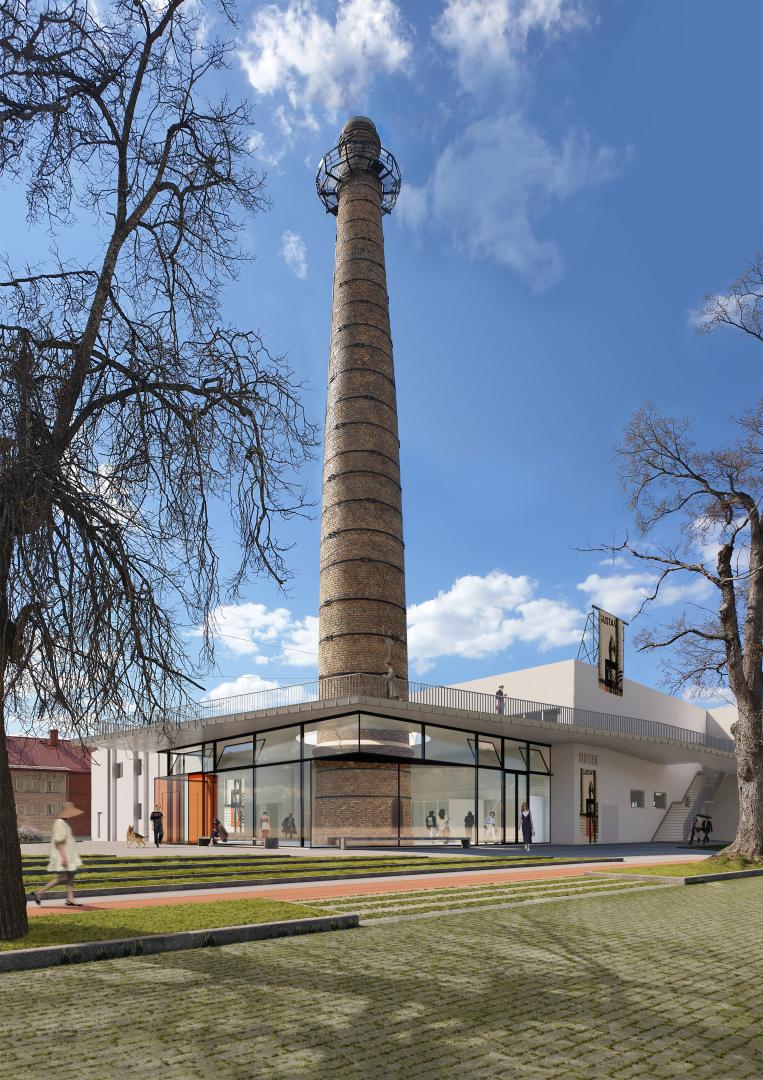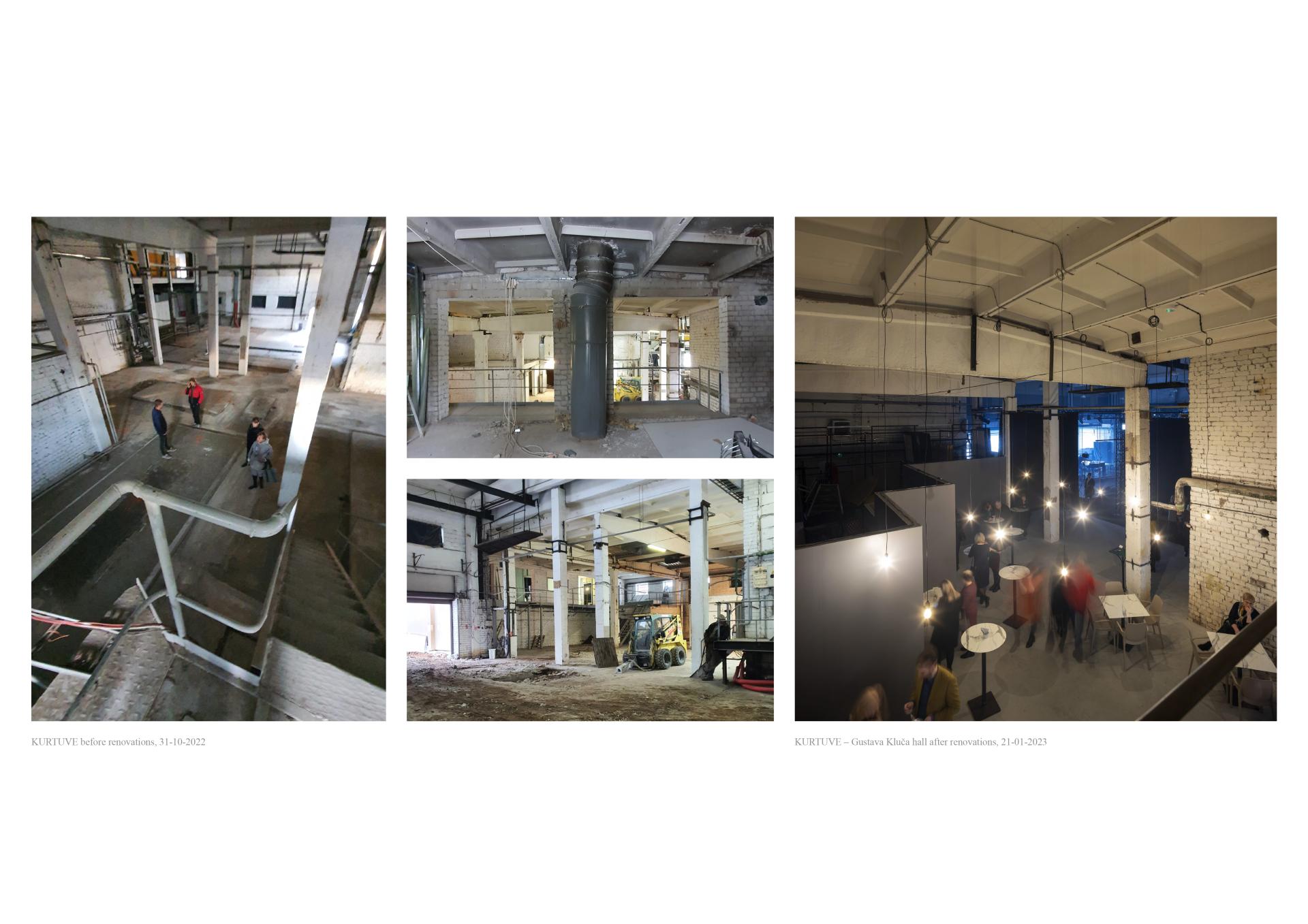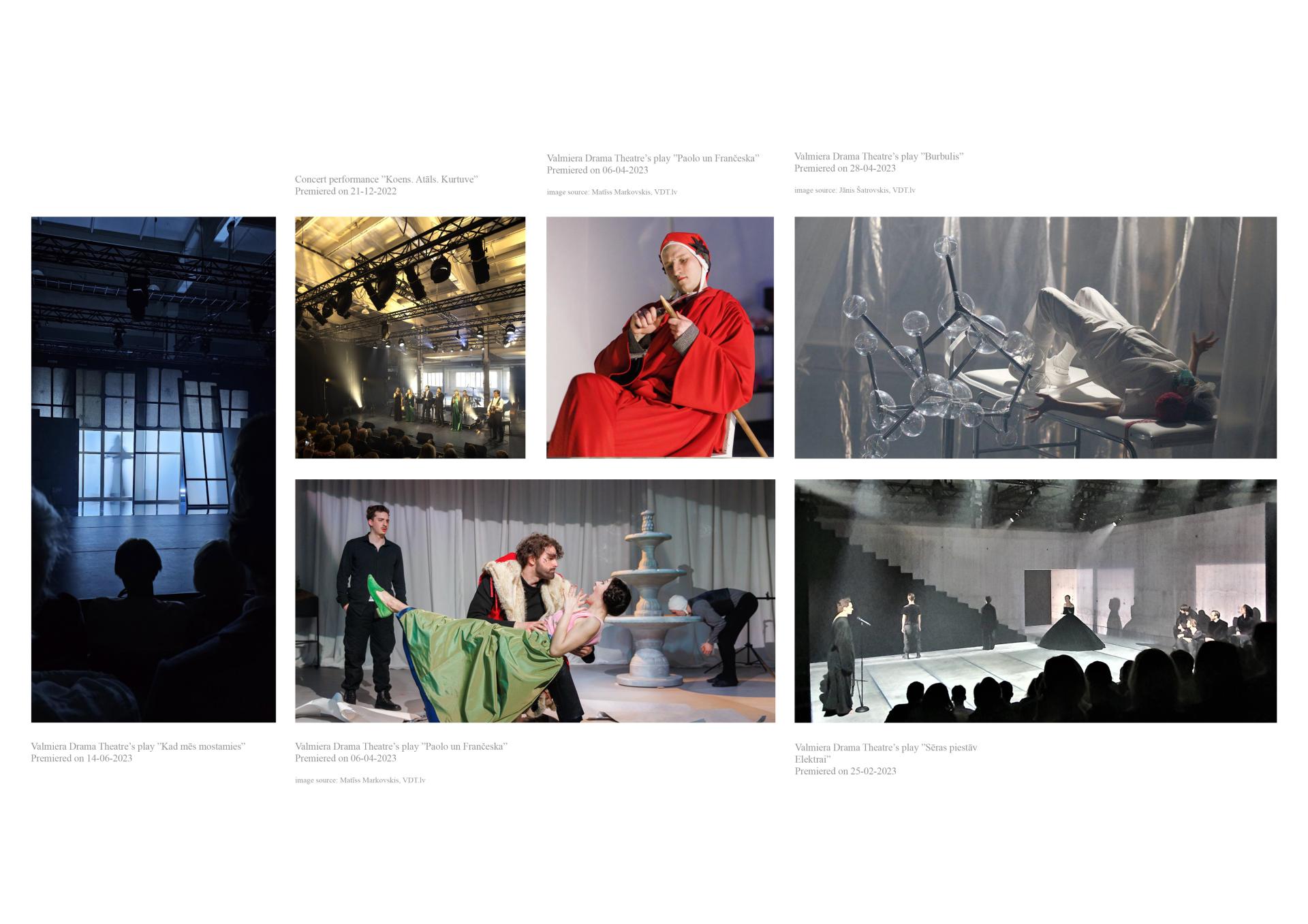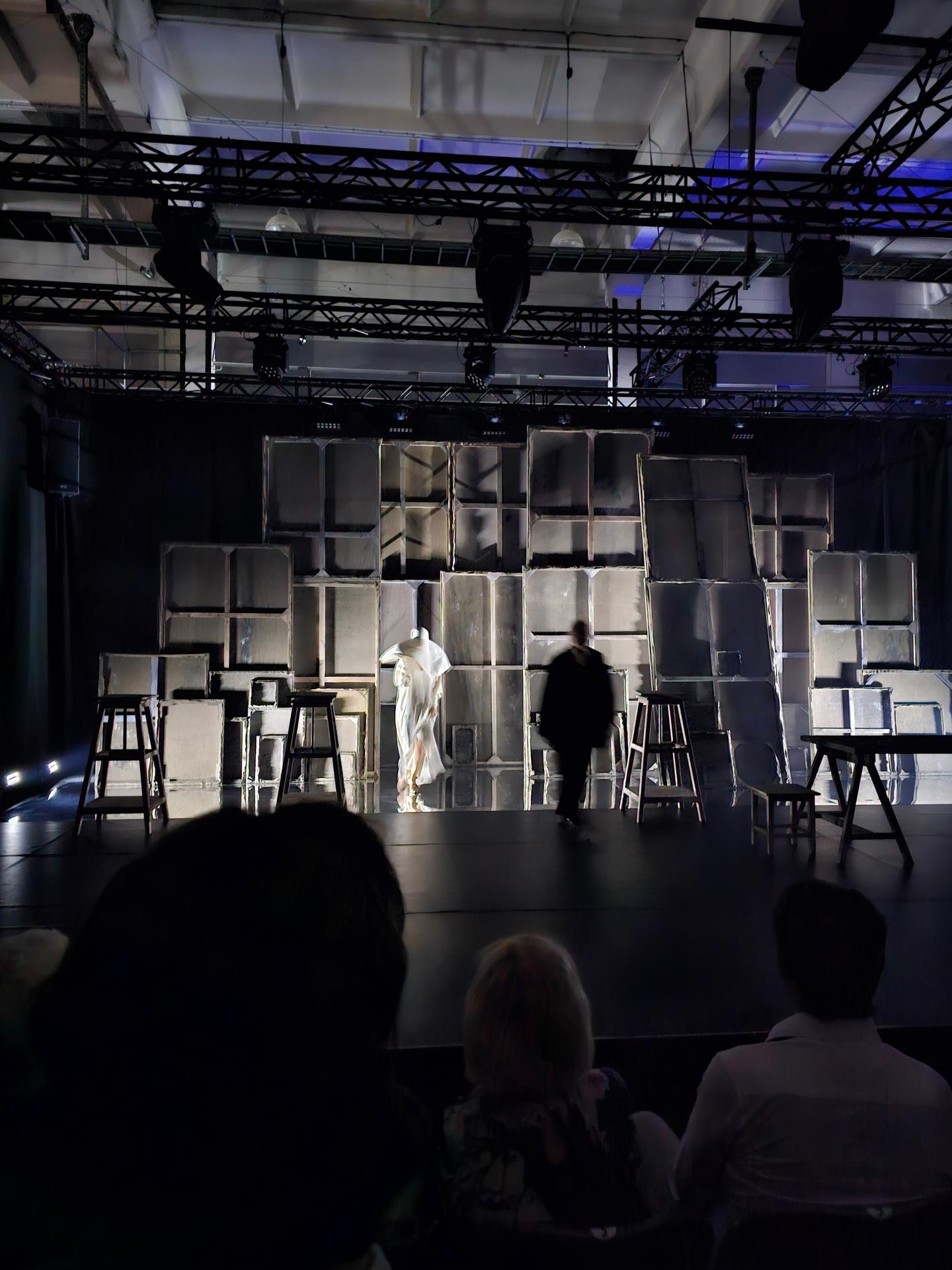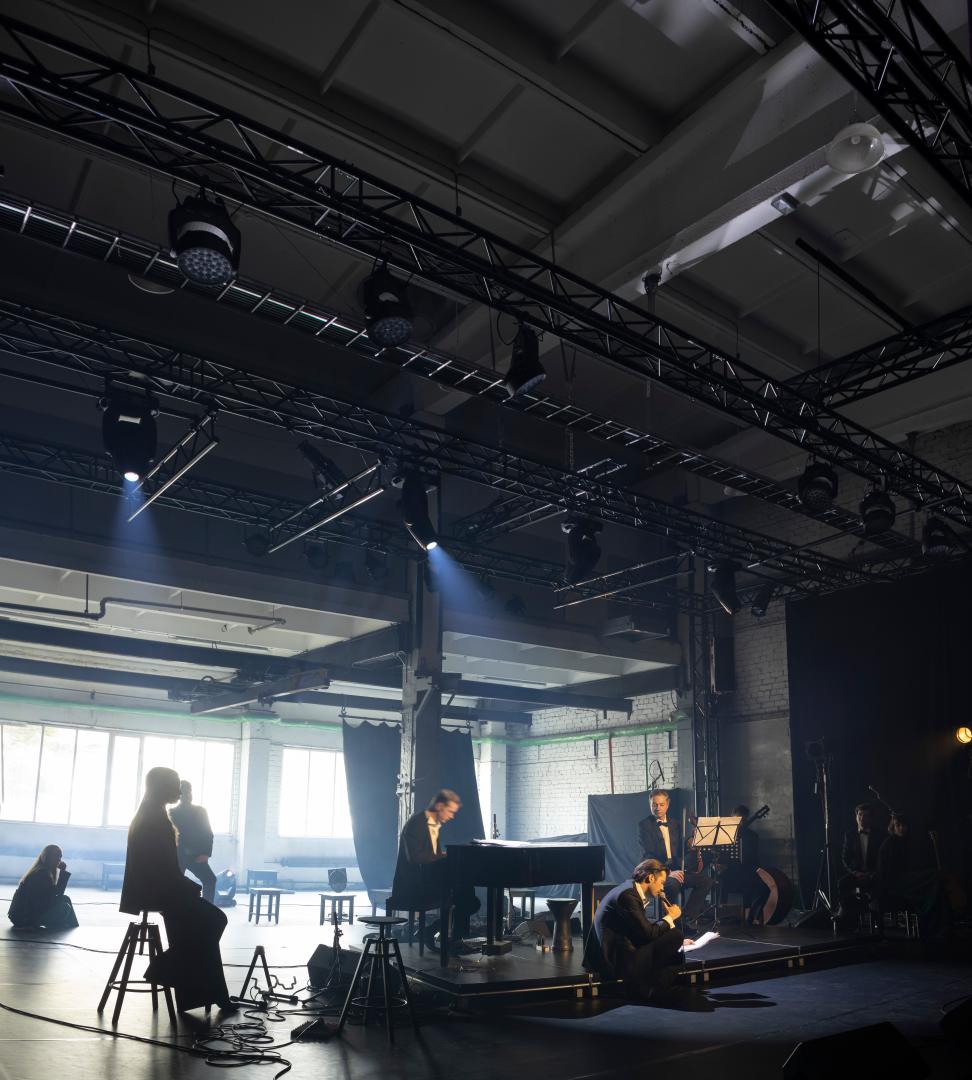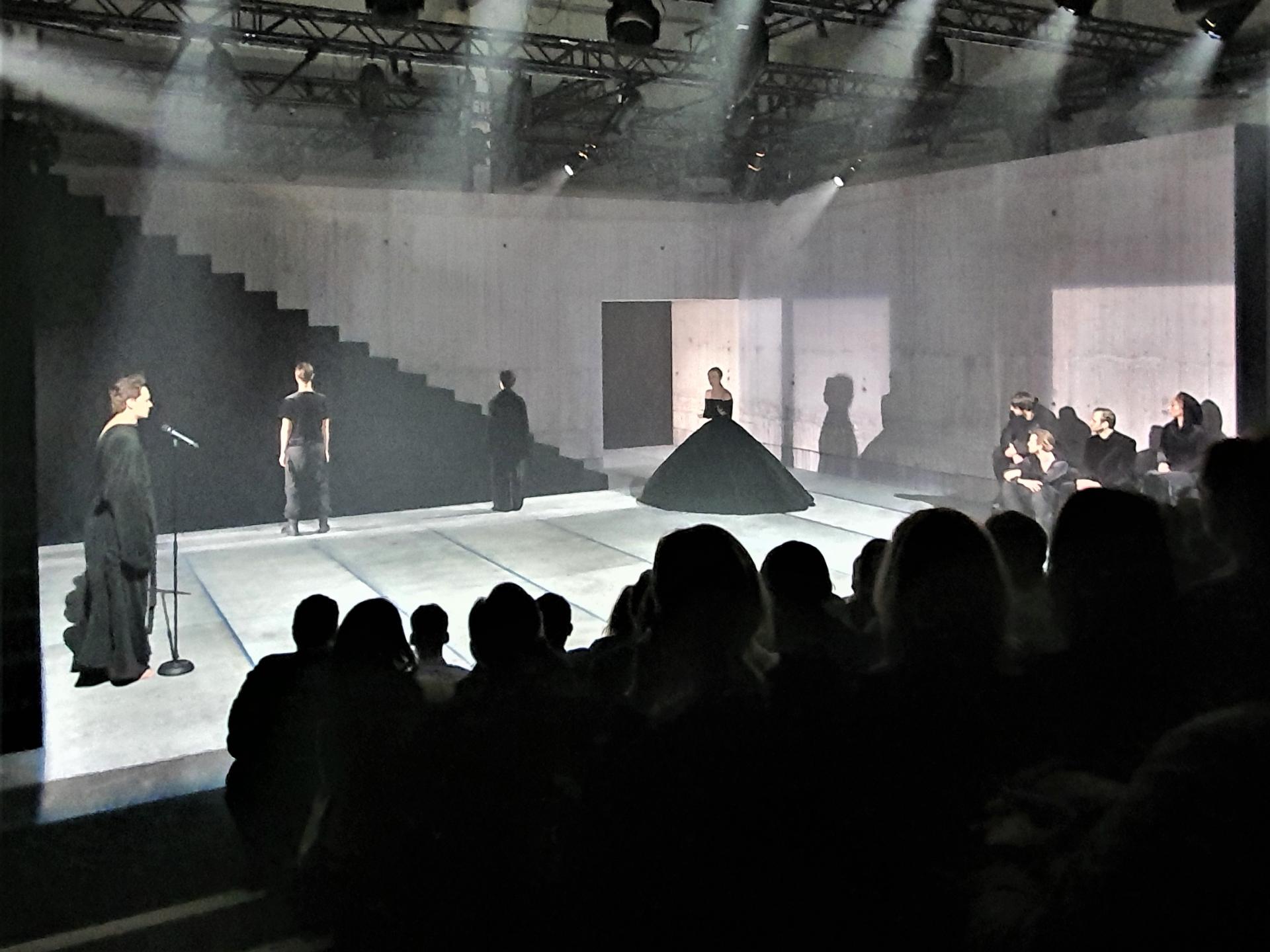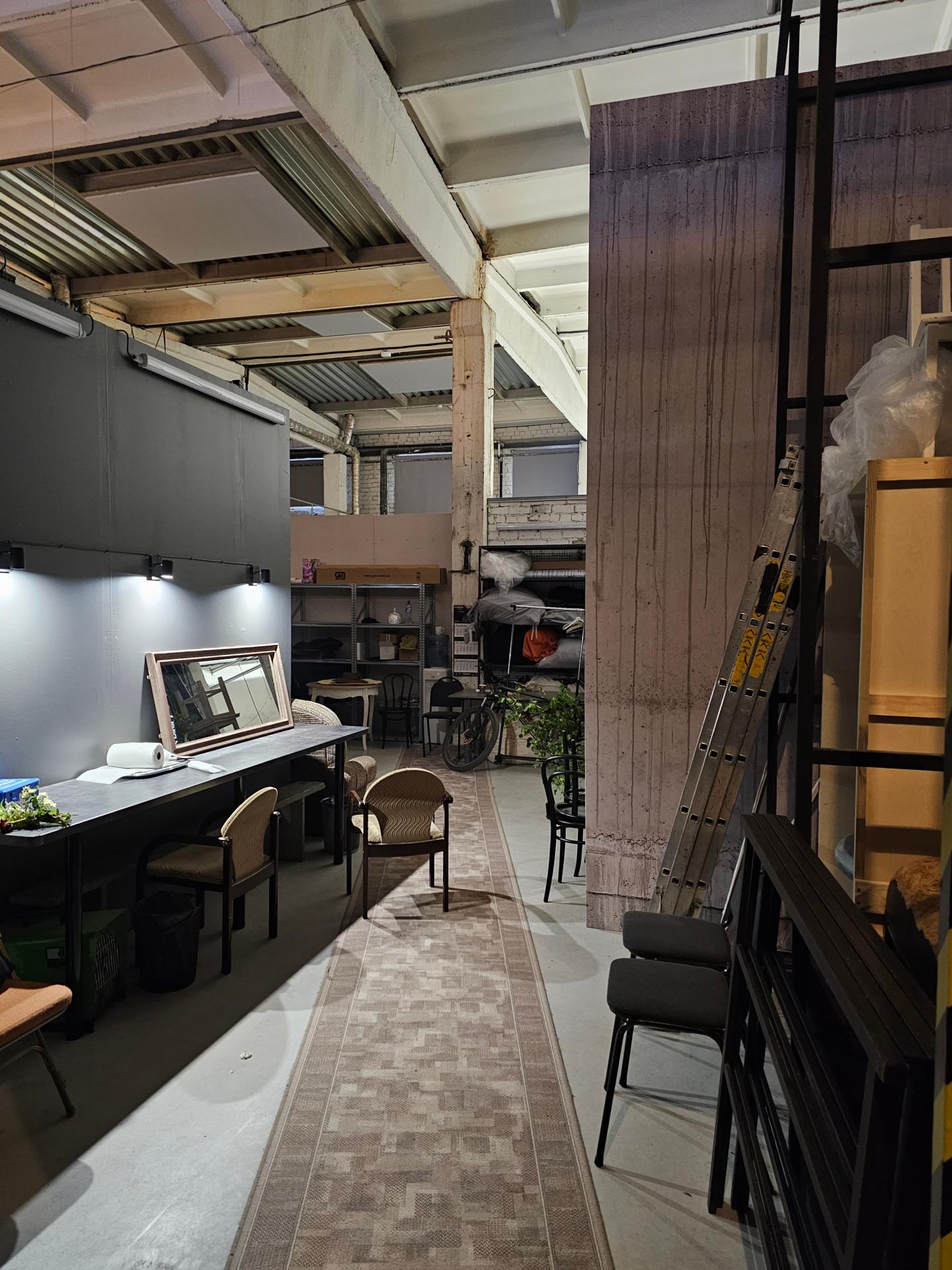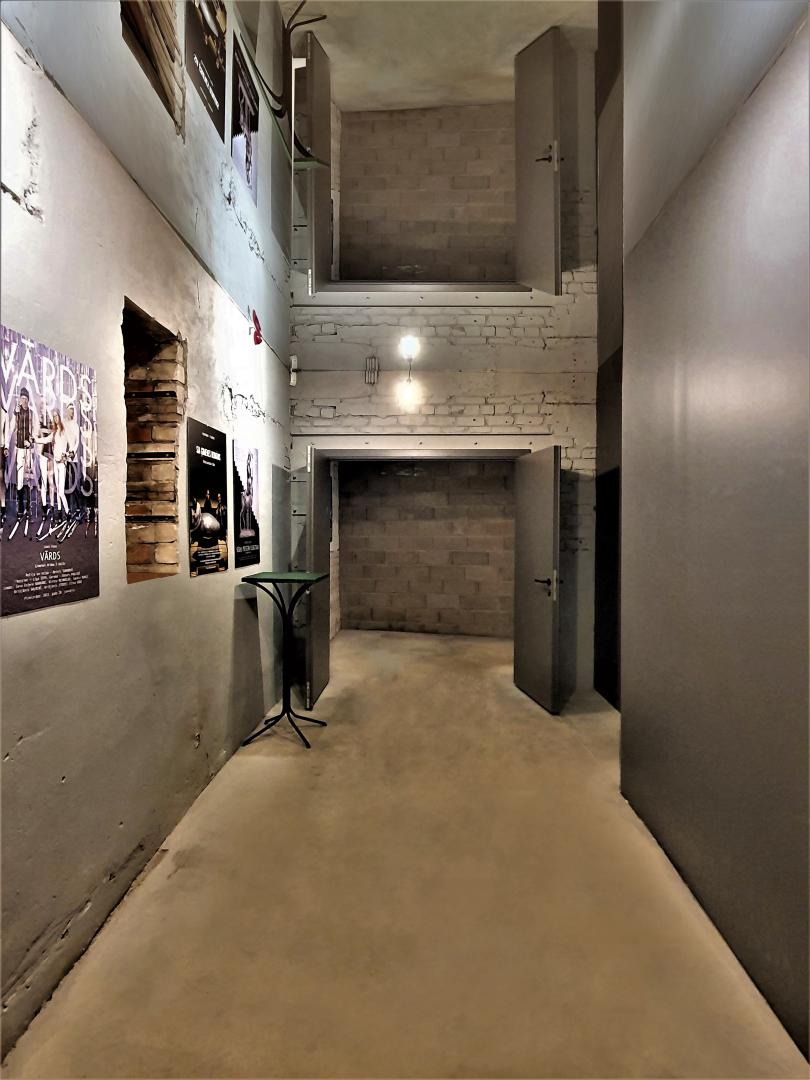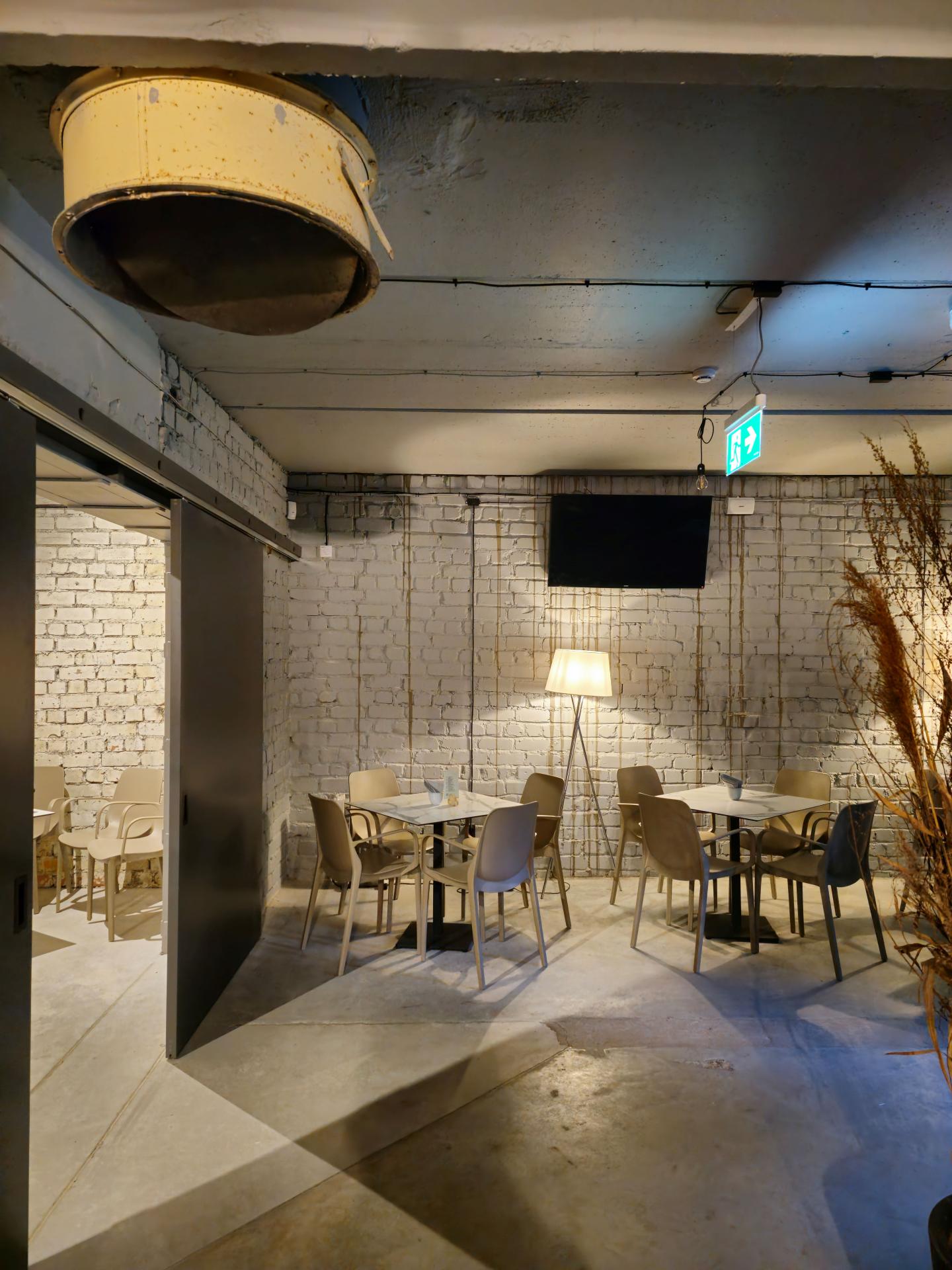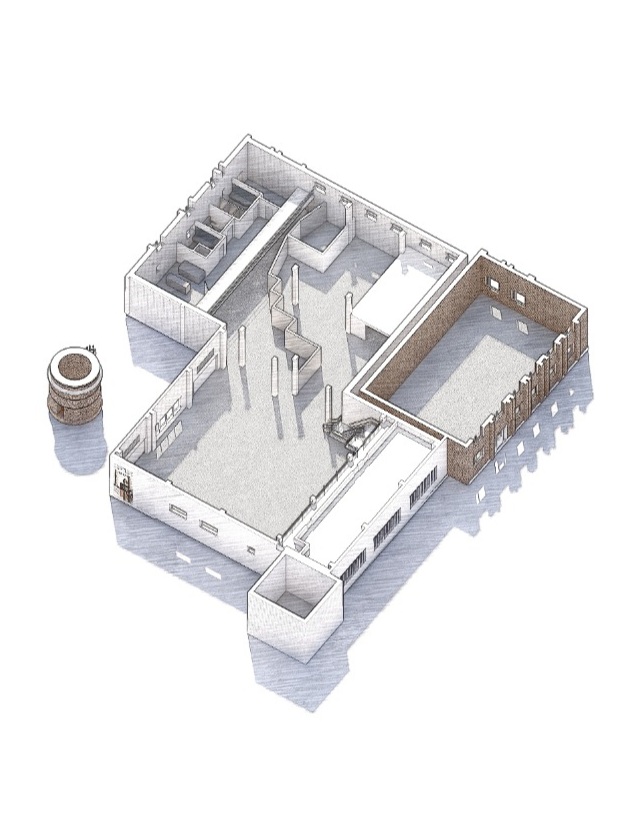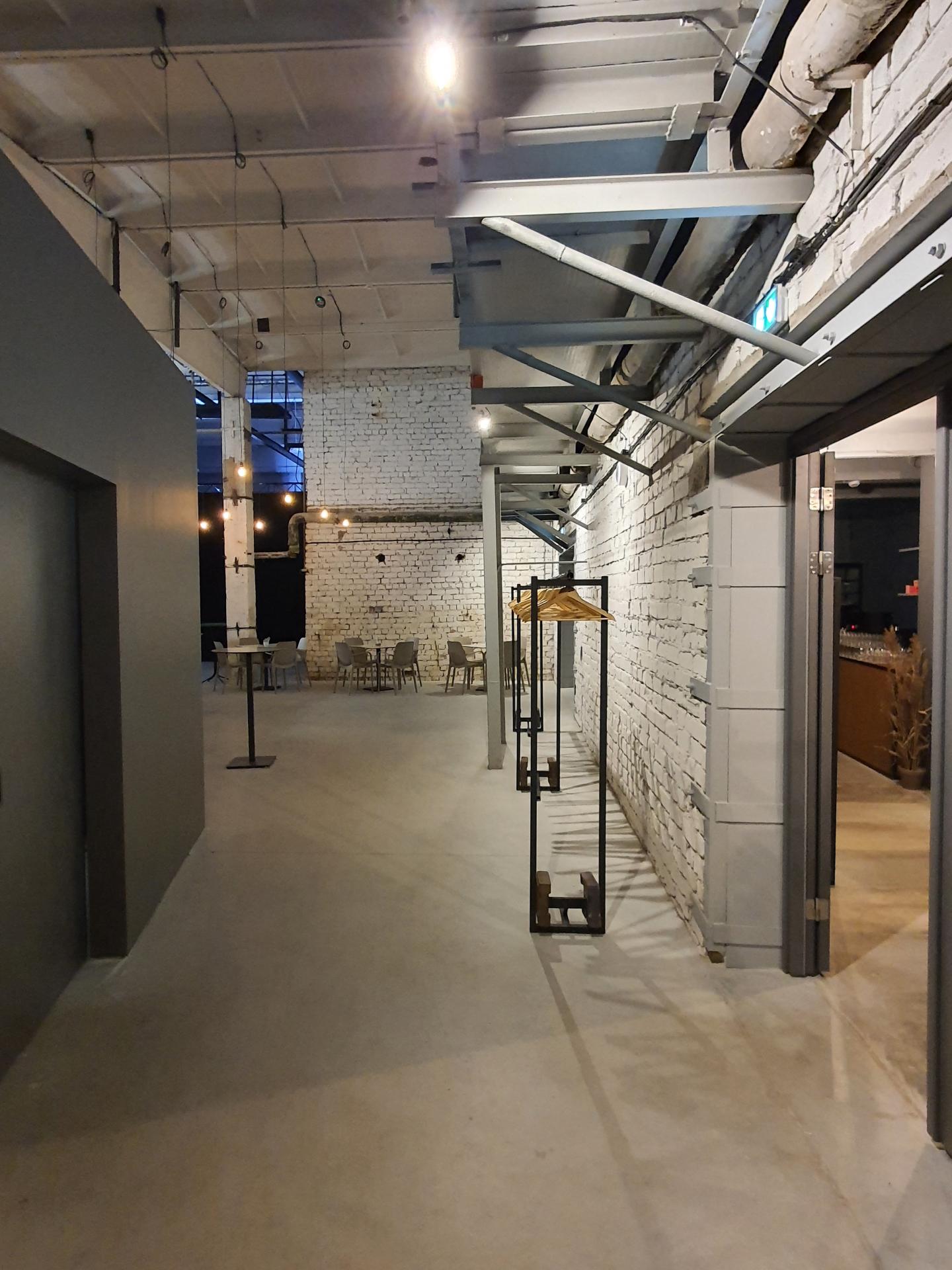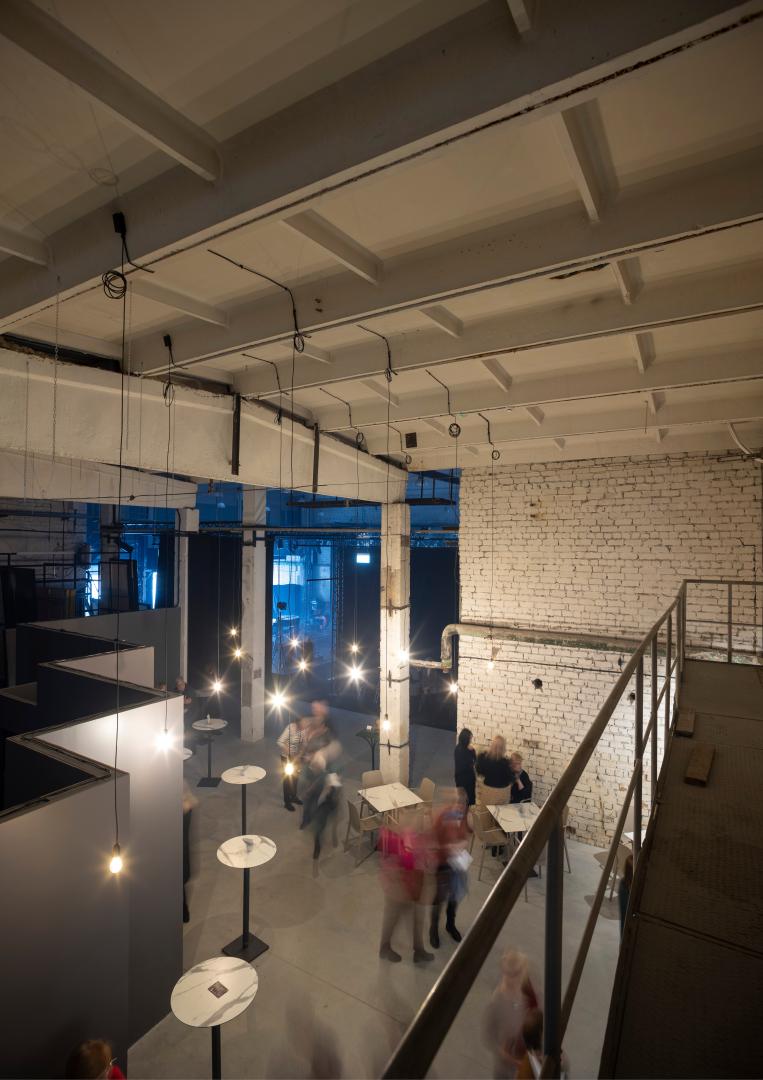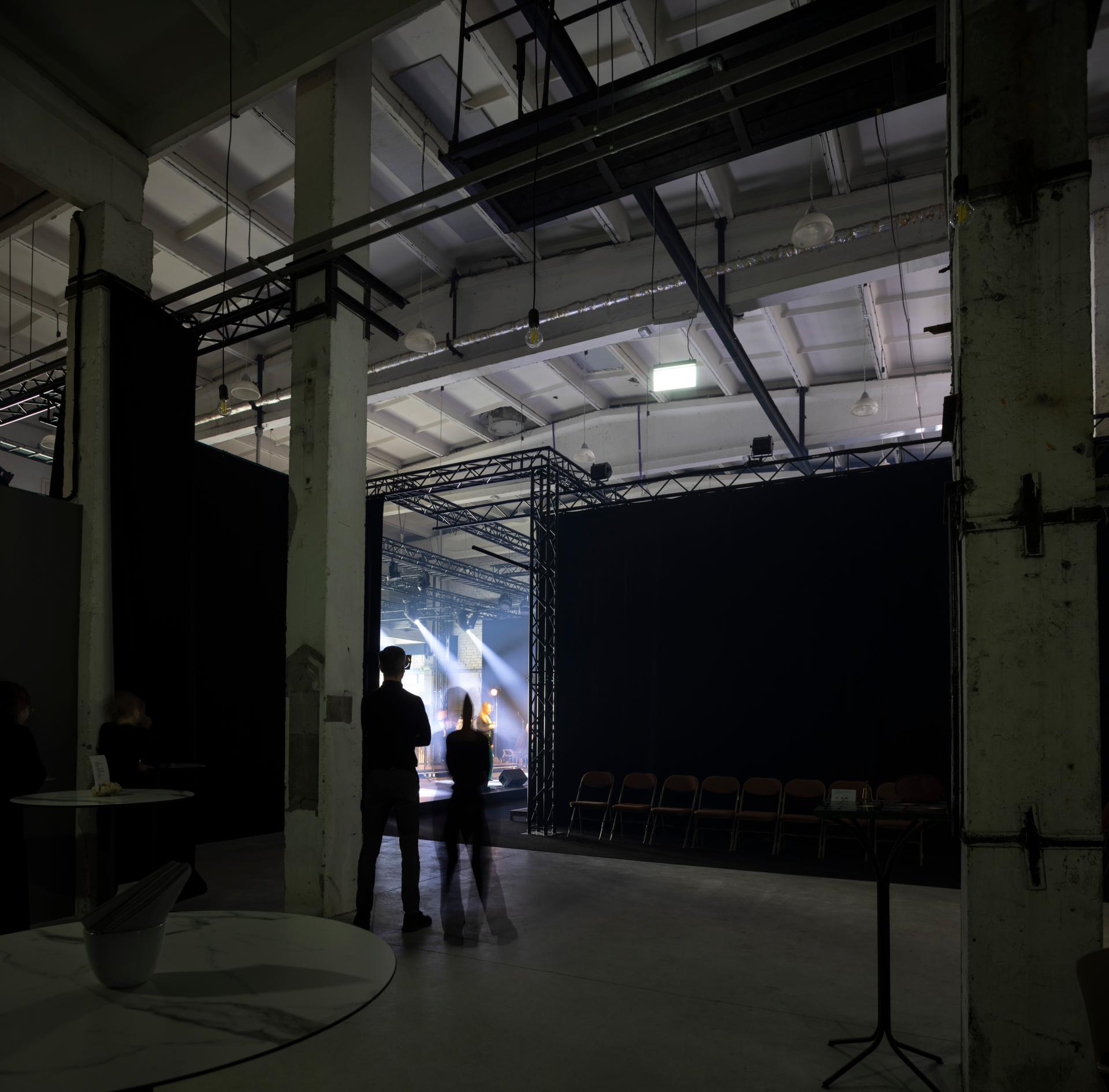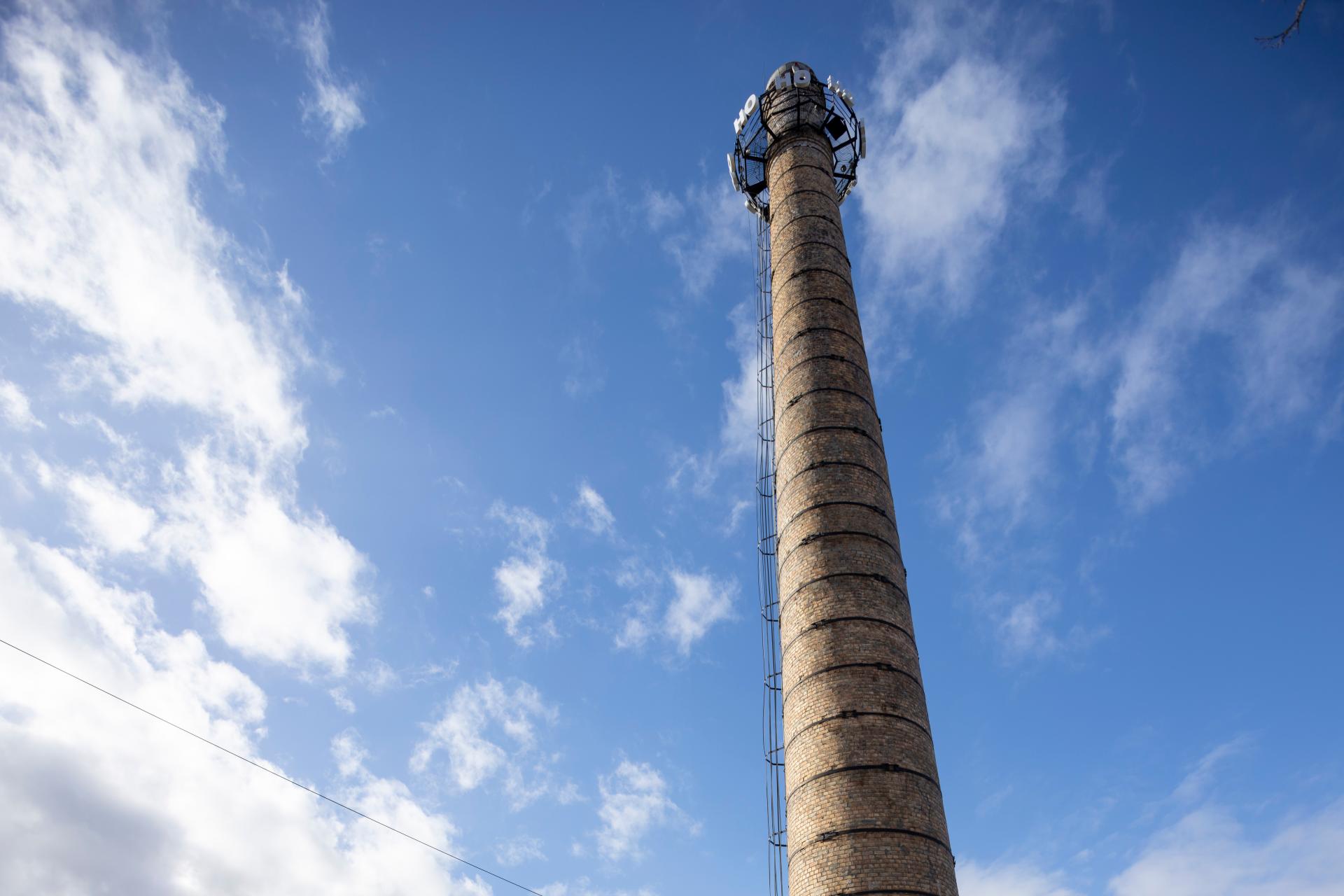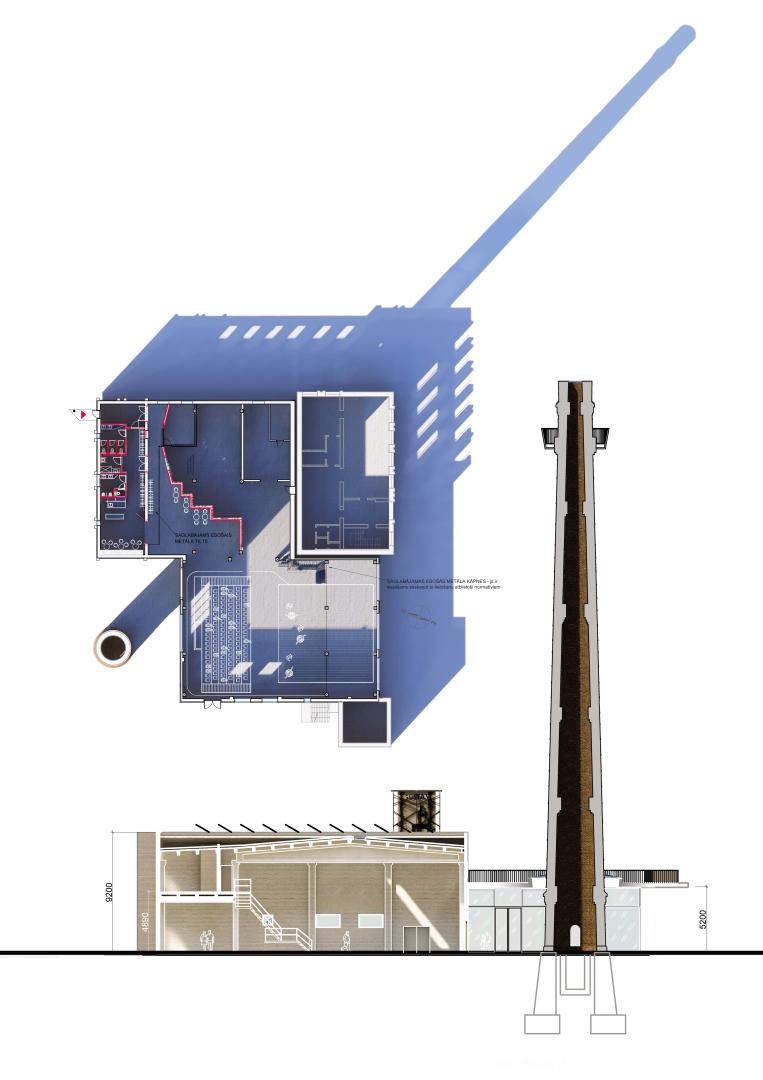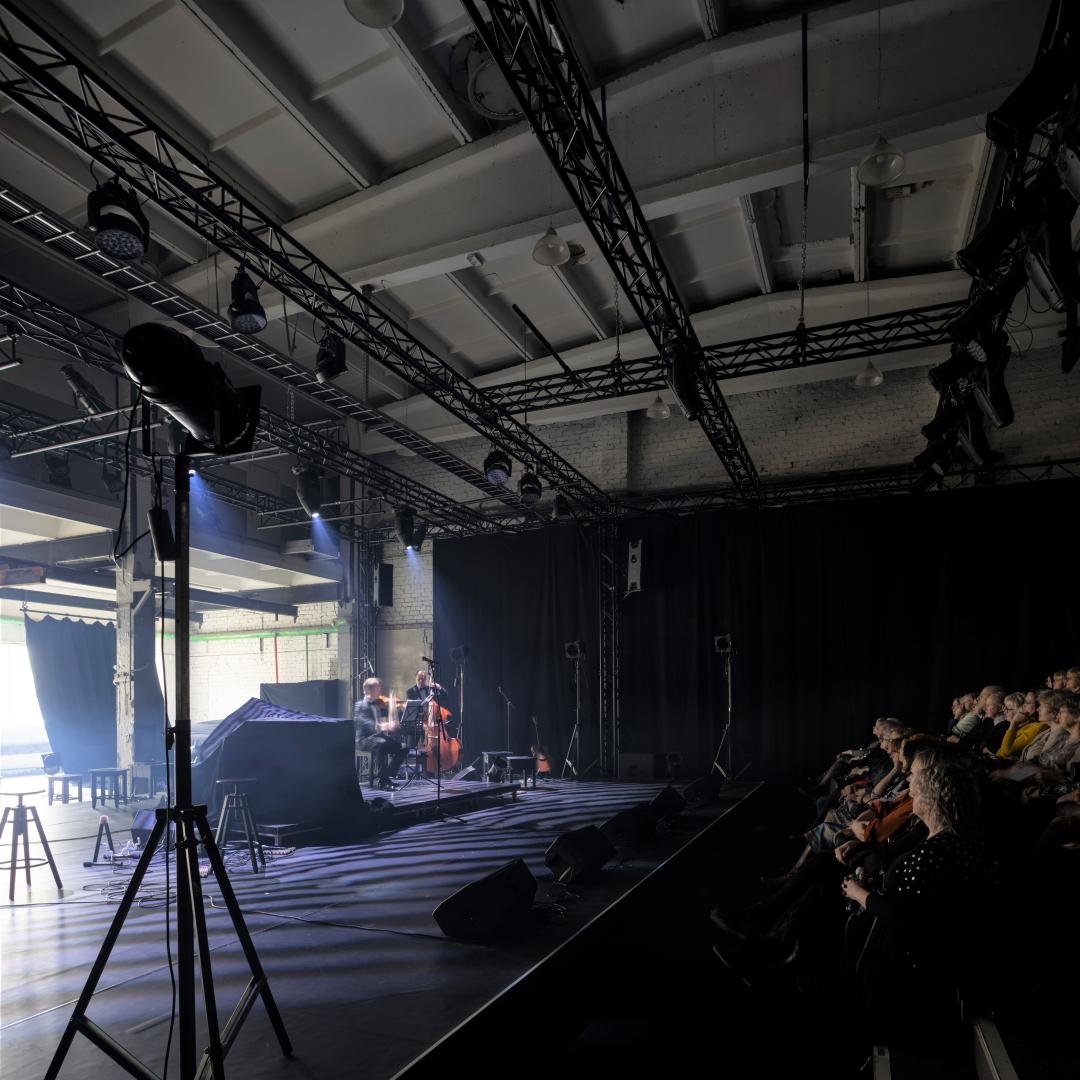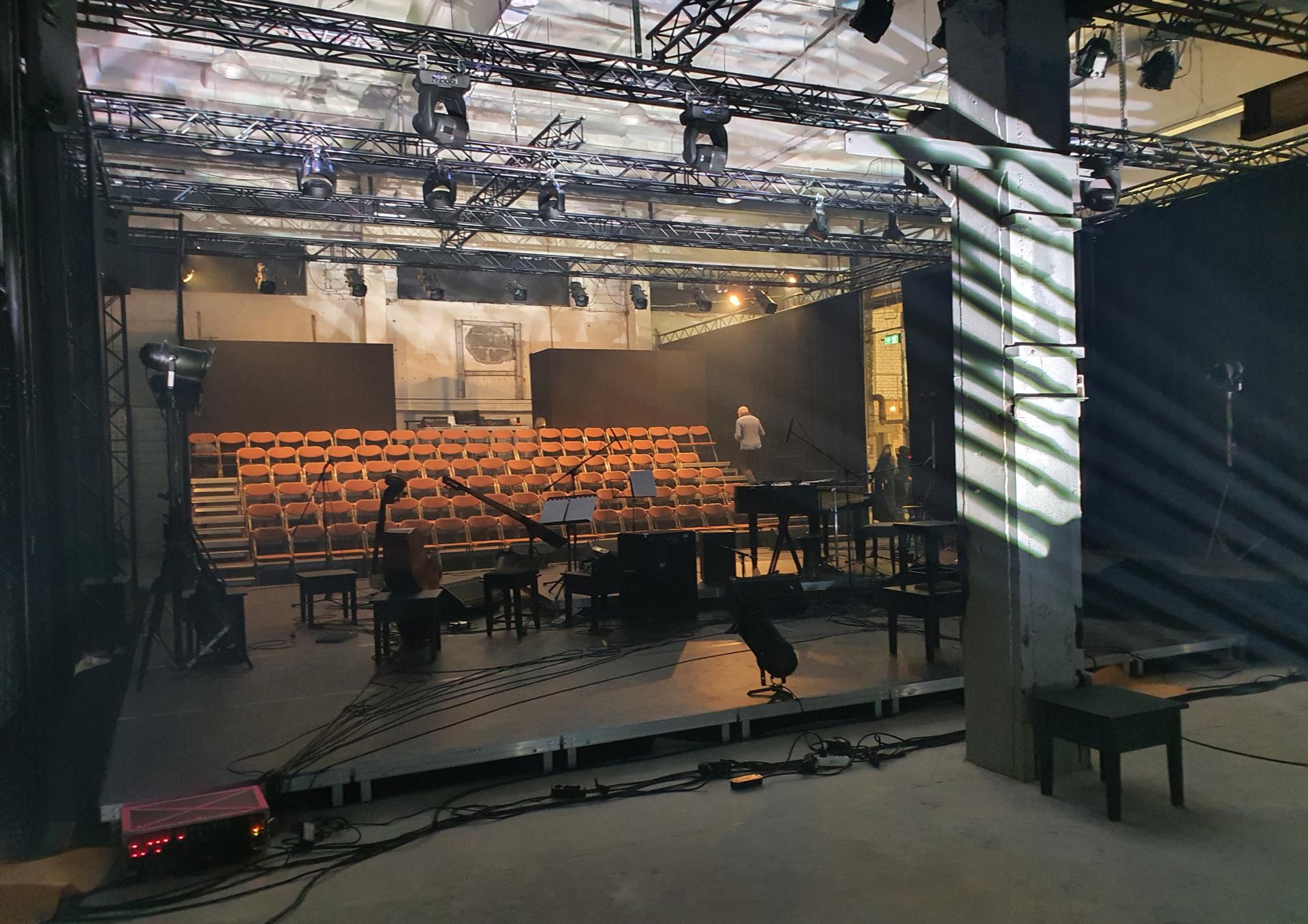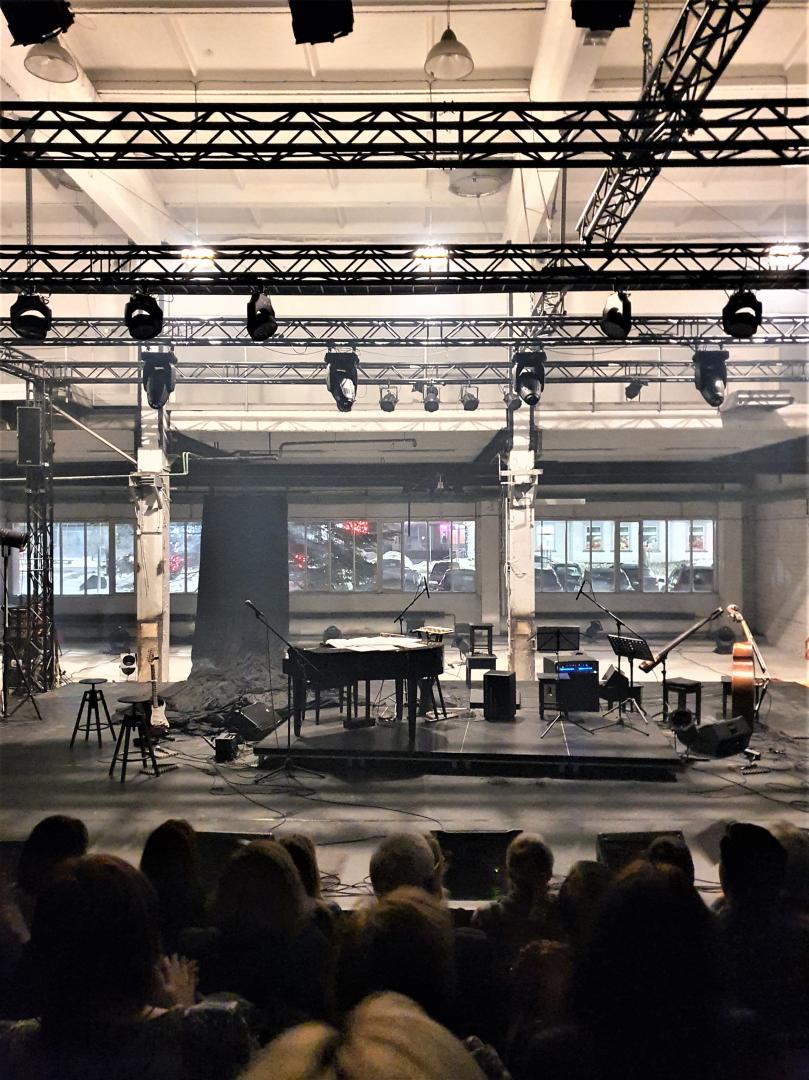Kurtuve:Recraft Theatre
Basic information
Project Title
Kurtuve:Recraft Theatre
Full project title
Kurtuve in Valmiera, Latvia: A Former Municipal Boiler House Transformed into a Cultural Venue
Category
Prioritising the places and people that need it the most
Project Description
A 1970s municipal boiler house in Valmiera, northern Latvia, has been transformed into the home of the Valmiera Drama Theatre. The project, which took just two months from concept to completion, showcases the collaboration between theatre artists and management, architects, and municipality organisations. The project is focused on sustainability, preserving the building's character and existing aesthetics, resulting in a stark industrial interior, a departure from traditional theatre opulence.
Geographical Scope
Regional
Project Region
Valmiera city / Valmiera county, Latvia
Urban or rural issues
It addresses urban-rural linkages
Physical or other transformations
It refers to a physical transformation of the built environment (hard investment)
EU Programme or fund
No
Description of the project
Summary
Valmiera's former boiler house is built in the 1970s and located in the very centre of Valmiera. However, with reconstruction works of the theatre building in Valmiera currently suspended and likely to take a long time to complete, the theatre collective was forced to find a temporary home to enable it to continue delivering high-quality drama to northern Latvia. Within two months, with funding from the Ministry of Culture and the support of the municipality, the Kurtuve project was drawn up and the reconstruction carried out, creating a theatre hall and auxiliary rooms, while preserving the industrial character of the building.
In developing ideas for the future use of the building once Valmiera Theatre has returned to its current premises, the local creative community and the Latvian Academy of Culture were involved, and the needs of the city were formulated through discussions, which could be realised in the Kurtuve. According to the participants, the city of Valmiera is in need of a place/space that would be freely accessible, shared, multifunctional and a prominent tourism landmark. There are unmet needs for community-building, artistic self-expression, adult education, and meaningful leisure time. Industrial heritage in Valmiera can be put to numerous uses. Several ideas for the development of the boiler house have been put forward - artistic activities for various groups, creation of a creative quarter, an educational place, municipal collaboration with the entrepreneurs, interdisciplinary culture, promoting tourism.
The results achieved are the creation of a new cultural venue, effectively using existing and local resources. The theatre has the opportunity to stage performances, Valmiera Theatre is becoming increasingly popular in the local area and elsewhere in Latvia, and the quality of Kurtuve's performances is also confirmed by several nominations for the highest level theatre award in Latvia, the Spēlmaņu nakts event.
In developing ideas for the future use of the building once Valmiera Theatre has returned to its current premises, the local creative community and the Latvian Academy of Culture were involved, and the needs of the city were formulated through discussions, which could be realised in the Kurtuve. According to the participants, the city of Valmiera is in need of a place/space that would be freely accessible, shared, multifunctional and a prominent tourism landmark. There are unmet needs for community-building, artistic self-expression, adult education, and meaningful leisure time. Industrial heritage in Valmiera can be put to numerous uses. Several ideas for the development of the boiler house have been put forward - artistic activities for various groups, creation of a creative quarter, an educational place, municipal collaboration with the entrepreneurs, interdisciplinary culture, promoting tourism.
The results achieved are the creation of a new cultural venue, effectively using existing and local resources. The theatre has the opportunity to stage performances, Valmiera Theatre is becoming increasingly popular in the local area and elsewhere in Latvia, and the quality of Kurtuve's performances is also confirmed by several nominations for the highest level theatre award in Latvia, the Spēlmaņu nakts event.
Key objectives for sustainability
Converting unused municipal industrial building into a cultural venue accessible to the public.
The project showcases the potential for underutilised municipal structures to be reborn as cultural treasures. The success of this endeavour has significantly elevated Valmiera's cultural scene. The theatre, now with its unique and engaging space, has garnered increasing popularity not just locally but also throughout Latvia. Kurtuve underscores the potential for positive change through urban renewal and transformation.
Uniting architects, theatre artists, local residents, and municipal authorities to collaboratively add value to the cultural venue and contribute to the development of Valmiera.
Each stakeholder played a pivotal role in co-creating a cultural venue that not only serves as a source of artistic enrichment but also breathes life into the city's urban fabric. Their collective efforts were instrumental in adding value to the renovated space, revitalising the cultural landscape of Valmiera, and contributing to the city's overall development.
To minimise project costs and environmental impact, our aim was to select and reuse existing resources efficiently.
By repurposing an existing structure rather than embarking on new construction, the team effectively minimised the project's costs and reduced its environmental footprint. This approach not only saved resources but also significantly reduced waste generation, aligning with contemporary sustainability goals.
Enhancing urban sustainability and fostering a stronger sense of community as integral elements in shaping the city's identity.
The project aimed to foster a stronger sense of community, a crucial aspect of urban sustainability. The intention was to create a space where people could gather, collaborate, and celebrate. This contributed to a cohesive, community-oriented city identity.
The project showcases the potential for underutilised municipal structures to be reborn as cultural treasures. The success of this endeavour has significantly elevated Valmiera's cultural scene. The theatre, now with its unique and engaging space, has garnered increasing popularity not just locally but also throughout Latvia. Kurtuve underscores the potential for positive change through urban renewal and transformation.
Uniting architects, theatre artists, local residents, and municipal authorities to collaboratively add value to the cultural venue and contribute to the development of Valmiera.
Each stakeholder played a pivotal role in co-creating a cultural venue that not only serves as a source of artistic enrichment but also breathes life into the city's urban fabric. Their collective efforts were instrumental in adding value to the renovated space, revitalising the cultural landscape of Valmiera, and contributing to the city's overall development.
To minimise project costs and environmental impact, our aim was to select and reuse existing resources efficiently.
By repurposing an existing structure rather than embarking on new construction, the team effectively minimised the project's costs and reduced its environmental footprint. This approach not only saved resources but also significantly reduced waste generation, aligning with contemporary sustainability goals.
Enhancing urban sustainability and fostering a stronger sense of community as integral elements in shaping the city's identity.
The project aimed to foster a stronger sense of community, a crucial aspect of urban sustainability. The intention was to create a space where people could gather, collaborate, and celebrate. This contributed to a cohesive, community-oriented city identity.
Key objectives for aesthetics and quality
Aesthetic:
Kurtuve embodies a tribute to its industrial heritage while incorporating theatre-specific design elements, resulting in an engaging and captivating ambience. Located in the heart of Valmiera, this cultural centre exemplifies the elegance of simplicity and the authenticity of a reused industrial building.
A commitment to an experience:
The project is underpinned by a commitment to providing a cultural experience for both artists and audiences. Careful design and resourceful use of existing assets has created an intimate and immersive theatre venue. The theatre hall and ancillary spaces have been designed to ensure that each facet contributes to a rich and immersive experience for all participants. The presence of windows framing view of the town's main street at night provides a unique backdrop.
Cultural enrichment and community impact:
Kurtuve represents the pinnacle of cultural enrichment in the region. Its success is evidenced by the growing popularity of the Valmiera Theatre, making it a cultural destination not only for the local community, but for Latvia as a whole. Several productions staged here have been nominated for the prestigious Spēlmaņu nakts awards.
Kurtuve is exemplary in this context, as the project integrates architectural aesthetics and cultural enrichment. It harmoniously blends the building's industrial heritage with contemporary design, creating an aesthetic that captivates and inspires. Beyond visual appeal, the project focuses on enhancing the quality of cultural offerings, positioning it as a symbol of cultural enrichment in Valmiera. This initiative sets a high standard for those wishing to achieve a similar fusion of aesthetics and cultural benefits in their communities. Kurtuve goes beyond mere architecture; it demonstrates the profound impact of art, culture and heritage conservation in improving quality of life and strengthening community identity.
Kurtuve embodies a tribute to its industrial heritage while incorporating theatre-specific design elements, resulting in an engaging and captivating ambience. Located in the heart of Valmiera, this cultural centre exemplifies the elegance of simplicity and the authenticity of a reused industrial building.
A commitment to an experience:
The project is underpinned by a commitment to providing a cultural experience for both artists and audiences. Careful design and resourceful use of existing assets has created an intimate and immersive theatre venue. The theatre hall and ancillary spaces have been designed to ensure that each facet contributes to a rich and immersive experience for all participants. The presence of windows framing view of the town's main street at night provides a unique backdrop.
Cultural enrichment and community impact:
Kurtuve represents the pinnacle of cultural enrichment in the region. Its success is evidenced by the growing popularity of the Valmiera Theatre, making it a cultural destination not only for the local community, but for Latvia as a whole. Several productions staged here have been nominated for the prestigious Spēlmaņu nakts awards.
Kurtuve is exemplary in this context, as the project integrates architectural aesthetics and cultural enrichment. It harmoniously blends the building's industrial heritage with contemporary design, creating an aesthetic that captivates and inspires. Beyond visual appeal, the project focuses on enhancing the quality of cultural offerings, positioning it as a symbol of cultural enrichment in Valmiera. This initiative sets a high standard for those wishing to achieve a similar fusion of aesthetics and cultural benefits in their communities. Kurtuve goes beyond mere architecture; it demonstrates the profound impact of art, culture and heritage conservation in improving quality of life and strengthening community identity.
Key objectives for inclusion
Accessibility for All: The project's foremost goal was to create a space that is freely accessible to everyone. It was designed with inclusivity in mind, ensuring that individuals from all walks of life can visit and participate in the cultural activities it hosts. By converting an existing structure, the project not only minimised costs but also facilitated easy access for residents and visitors alike.
Inclusive Governing Systems: The success of the project can be attributed to a collaborative approach. Architects, theatre artists, local residents, and municipal authorities joined forces to co-create this cultural space. This inclusive governance model ensured that diverse perspectives were considered, making it a true reflection of the community's collective aspirations.
Design for All Principles: The architectural and design elements of the project followed the principles of "design for all." The converted space is not only aesthetically pleasing but also functional and accommodating for individuals with varying abilities. The incorporation of accessible infrastructure and thoughtful design promotes an environment where everyone feels welcomed and comfortable.
New Societal Models: The project emphasises fostering a sense of community, artistic expression, and meaningful leisure time. It showcases the potential for reused industrial heritage to meet the evolving needs of a modern city. It serves as an inspiring example of how urban sustainability and community development can coexist harmoniously, challenging traditional models of urban planning.
Inclusive Governing Systems: The success of the project can be attributed to a collaborative approach. Architects, theatre artists, local residents, and municipal authorities joined forces to co-create this cultural space. This inclusive governance model ensured that diverse perspectives were considered, making it a true reflection of the community's collective aspirations.
Design for All Principles: The architectural and design elements of the project followed the principles of "design for all." The converted space is not only aesthetically pleasing but also functional and accommodating for individuals with varying abilities. The incorporation of accessible infrastructure and thoughtful design promotes an environment where everyone feels welcomed and comfortable.
New Societal Models: The project emphasises fostering a sense of community, artistic expression, and meaningful leisure time. It showcases the potential for reused industrial heritage to meet the evolving needs of a modern city. It serves as an inspiring example of how urban sustainability and community development can coexist harmoniously, challenging traditional models of urban planning.
Results in relation to category
Valmiera is located 110 km north-east of Riga, the capital of Latvia. The industrial and economic life of the town is concentrated on the banks of the Gauja River - Valmiera is home to the largest production and trading companies in the Vidzeme region and the country, which are recognised even beyond the country's borders: production of glass fibre, metal fuel cans, fire extinguishers, metal products.
Considering the fact that Valmiera was an industrial town and that most of its architectural heritage was destroyed during the Second World War, it is very important that the industrial building, the former municipal boiler house, has been adapted to the needs of the theatre thanks to the Valmiera Theatre Initiative, with the support of the Ministry of Culture of the Republic of Latvia and Valmiera Municipality. In the future, the building will be transformed into the Kurtuve Centre for Contemporary Art. This is an excellent example of circular economy, and thanks to the successful operation of the theatre in the building, it is becoming a model for other municipalities in Latvia.
Founded in 1923, the theatre is the main cultural centre of the city of Valmiera. The theatre cultivates the most diverse forms of classical values and cultural identity, while at the same time preserving the possibilities of an experimental incubator. The theatre is the only professional theatre in the Vidzeme region, which ensures the availability of professional theatre art for various target groups of the society and promotes the decentralisation of cultural processes in Latvia.
The theatre takes care of new creative projects in the cultural environment of the theatre, the existence of the traditional Valmiera Summer Theatre Festival, and continues to research and update the Latvian codex in the Baltic cultural environment.
The theatre's target audience is the entire population of Vidzeme, but in the 21st century the audience also includes residents of Riga and guests from Latvia.
Considering the fact that Valmiera was an industrial town and that most of its architectural heritage was destroyed during the Second World War, it is very important that the industrial building, the former municipal boiler house, has been adapted to the needs of the theatre thanks to the Valmiera Theatre Initiative, with the support of the Ministry of Culture of the Republic of Latvia and Valmiera Municipality. In the future, the building will be transformed into the Kurtuve Centre for Contemporary Art. This is an excellent example of circular economy, and thanks to the successful operation of the theatre in the building, it is becoming a model for other municipalities in Latvia.
Founded in 1923, the theatre is the main cultural centre of the city of Valmiera. The theatre cultivates the most diverse forms of classical values and cultural identity, while at the same time preserving the possibilities of an experimental incubator. The theatre is the only professional theatre in the Vidzeme region, which ensures the availability of professional theatre art for various target groups of the society and promotes the decentralisation of cultural processes in Latvia.
The theatre takes care of new creative projects in the cultural environment of the theatre, the existence of the traditional Valmiera Summer Theatre Festival, and continues to research and update the Latvian codex in the Baltic cultural environment.
The theatre's target audience is the entire population of Vidzeme, but in the 21st century the audience also includes residents of Riga and guests from Latvia.
How Citizens benefit
The active participation of citizens in the project has fostered a sense of ownership and pride within the community. This ownership has translated into community support, sustained commitment and a sense of responsibility for the success of the project.
The local residents provided invaluable input and insight into the community's needs and aspirations for the eventual use of Kurtuve after the theatre moves back to its original location. They actively participated in discussions and brainstorming sessions, contributing to the project's vision of a space that is accessible, multi-functional and culturally enriching. This level of involvement ensured that the project is rooted in the local context and responsive to the unique needs of the community.
Kurtuve represents a holistic approach to urban development. It demonstrates that a commitment to sustainability, cultural enrichment and community engagement need not be separate endeavours. Instead, they can be intertwined to create a richer and more vibrant urban experience. The project's achievements are both tangible and symbolic.
The local residents provided invaluable input and insight into the community's needs and aspirations for the eventual use of Kurtuve after the theatre moves back to its original location. They actively participated in discussions and brainstorming sessions, contributing to the project's vision of a space that is accessible, multi-functional and culturally enriching. This level of involvement ensured that the project is rooted in the local context and responsive to the unique needs of the community.
Kurtuve represents a holistic approach to urban development. It demonstrates that a commitment to sustainability, cultural enrichment and community engagement need not be separate endeavours. Instead, they can be intertwined to create a richer and more vibrant urban experience. The project's achievements are both tangible and symbolic.
Physical or other transformations
It refers to a physical transformation of the built environment (hard investment)
Innovative character
The innovative character can also be expressed as a redefinition of existing knowledge and practices. A deeper understanding of the concept of architectural heritage, not only appreciating widely recognised historical buildings and architectural styles, but also seeing the potential beauty and potential of spaces that at first glance may seem unsuitable for the development of cultural venues.
Although there are such examples in Europe, in the Latvian context the innovative solution is to give a new function to the utilitarian building from the occupation period, especially emphasising that it is a public and cultural function, while at the same time preserving the layers and roughness of the utilitarian building.
Although there are such examples in Europe, in the Latvian context the innovative solution is to give a new function to the utilitarian building from the occupation period, especially emphasising that it is a public and cultural function, while at the same time preserving the layers and roughness of the utilitarian building.
Disciplines/knowledge reflected
The project is an example of successful cooperation not only between architects, craftsmen, designers, builders, but also between the local government and the management of the theatre.
The following areas were involved and reflected in the development and implementation of our project – the ability of the architect as a practitioner, craftsman to quickly deal with the placement of a cultural building in an existing utilitarian building structure, adapting the cultural functions of the existing space for creators and visitors; the ability of the builder as a professional and executor to choose construction technologies that allow construction works to be carried out in the required volume in a very short period of time; the ability of the local government and the theatre management to moderate this project to be implemented in a tight timeframe.
The following areas were involved and reflected in the development and implementation of our project – the ability of the architect as a practitioner, craftsman to quickly deal with the placement of a cultural building in an existing utilitarian building structure, adapting the cultural functions of the existing space for creators and visitors; the ability of the builder as a professional and executor to choose construction technologies that allow construction works to be carried out in the required volume in a very short period of time; the ability of the local government and the theatre management to moderate this project to be implemented in a tight timeframe.
Methodology used
The dominant approach to the Kurtuve project is "not doing too much". The first and most important aspect of the methodology is the definition of the approach at the very beginning of the project – the utilitarian details and layers of the existing industrial building, which should be preserved in their existing state of wear, in their existing location, actually intact, without trying to "refresh" or "improve" the details, layers. It is also very important to communicate this approach to the client at the very beginning of the project. It is important to agree this detail, the preservation of the layers, with all the parties involved – the builders, the users of the actual premises and the client.
How stakeholders are engaged
Kurtuve is an example of the power of collaboration between different stakeholders at different levels, and their involvement has been crucial to the success of the project and its multiple impacts on the community.
The theatre artists and management were deeply involved in the design and implementation. They were the end users of the space and actively participated in design decisions to ensure that the venue met their professional needs.
The local authorities played a crucial role in supporting the project. They were actively involved in project planning and worked closely with the other stakeholders. Their involvement was essential for the successful implementation of the project.
At national level, the Ministry of Culture played an important role. Their financial support was crucial for the realisation of the project. Their commitment added significant value by ensuring that the project received the necessary resources to become a reality.
Although the project was primarily a local initiative, it had wider implications at the European level, particularly in terms of cultural enrichment and heritage conservation. European stakeholders, although not directly involved in the day-to-day implementation, played a role in setting the wider context. The project exemplified the European value of preserving cultural heritage and promoting artistic endeavours.
The theatre artists and management were deeply involved in the design and implementation. They were the end users of the space and actively participated in design decisions to ensure that the venue met their professional needs.
The local authorities played a crucial role in supporting the project. They were actively involved in project planning and worked closely with the other stakeholders. Their involvement was essential for the successful implementation of the project.
At national level, the Ministry of Culture played an important role. Their financial support was crucial for the realisation of the project. Their commitment added significant value by ensuring that the project received the necessary resources to become a reality.
Although the project was primarily a local initiative, it had wider implications at the European level, particularly in terms of cultural enrichment and heritage conservation. European stakeholders, although not directly involved in the day-to-day implementation, played a role in setting the wider context. The project exemplified the European value of preserving cultural heritage and promoting artistic endeavours.
Global challenges
Kurtuve is an example of how the reuse of industrial spaces for cultural and artistic purposes can help address global challenges such as industrial heritage conservation, urban sustainability and cultural enrichment. The collaboration between the partners creates a unique added value and the result attracts a public audience. This local initiative serves as a model for harnessing the potential of existing resources to create spaces that align with global goals of heritage conservation, sustainability and cultural vibrancy.
Learning transferred to other parties
The methodology, technology, process that could be used in other places and projects would be the already described process of industrial buildings, especially utilitarian buildings, reconstruction and adaptation for new functions as a process itself. Do not take them apart, but use them. And the ability to preserve the spirit of the place (genius loci) and the memory that includes the layering of the original utilitarian details, and to be able to use the new functions in the spaces and interiors.
Keywords
Industrial building
Adaptive reuse
Sustainable design
Public venue - Theatre
Collaboration

